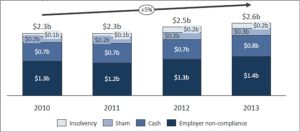In the complex world of high-rise construction, managing finances and ensuring the collection of debts is a critical aspect of maintaining business stability and success. The process of debt collection in such deals is multifaceted and requires a strategic approach that encompasses legal knowledge, effective communication, financial tools, risk management, and procedures for handling bankruptcy. This article delves into the various strategies that stakeholders in high-rise construction deals can employ to efficiently collect debts and safeguard their financial interests.
Key Takeaways
- Understanding the legal framework, including contractual terms and lien laws, is fundamental to enforcing debt collection in high-rise construction deals.
- Effective communication strategies, such as clear initial contact and thorough documentation, are essential for negotiating and resolving debt-related disputes.
- Utilizing financial tools like escrow accounts and credit enhancements can provide leverage and security in debt recovery efforts.
- Risk management through assessing creditworthiness and securing bonds can minimize the likelihood of debt collection issues arising.
- In cases of bankruptcy, knowing the priority of claims and negotiating post-bankruptcy recovery strategies are crucial for maximizing debt recovery.
Understanding the Legal Framework
Contractual Obligations and Terms
In the realm of high-rise construction, the foundation of debt collection is built upon clear contractual obligations and terms. These contracts serve as the blueprint for what is expected from each party, detailing payment schedules, work scope, and the consequences of non-payment.
Key clauses should be meticulously drafted to ensure they are enforceable and comprehensive. This includes specifying:
- The conditions for payment
- Penalties for late payments
- Mechanisms for change orders
- Termination rights
Ensuring that all parties are on the same page from the start can prevent disputes and streamline the debt collection process.
It is crucial to tailor contracts to the specific nuances of the high-rise construction industry, taking into account the unique risks and challenges involved. By doing so, parties can protect their interests and establish a solid groundwork for any necessary debt recovery actions.
Lien Laws and Their Application
Liens provide a powerful legal tool for creditors in the construction industry. By placing a lien on a property, contractors and suppliers can ensure their right to payment is secured against the real estate itself. It’s essential to understand the specific lien laws of your jurisdiction, as they can vary significantly.
- File a lien within the legal timeframe
- Serve the lien to the property owner
- Enforce the lien through legal action if necessary
Timeliness is critical. Missing a deadline can invalidate your lien, leaving you without this crucial leverage.
Remember, liens are subject to statutes of limitations. These laws dictate the timeframe within which you must act to preserve your rights. Adherence to these timelines is not just recommended; it’s a legal imperative for the successful recovery of debts.
Dispute Resolution Mechanisms
In the realm of high-rise construction deals, disputes are not uncommon. Effective dispute resolution mechanisms are crucial for timely and amicable settlements. A step-by-step approach often begins with negotiation, where parties aim to reach a mutual agreement. If initial talks falter, mediation or arbitration can serve as a bridge to resolution without the need for litigation.
Mediation offers a facilitated dialogue, with a neutral third party aiding in finding common ground. Arbitration, on the other hand, provides a binding decision from an impartial arbitrator. Both methods are less formal and more cost-effective than court proceedings.
When all else fails, legal action remains an option. However, it’s important to consider the impact of prolonged legal battles on project timelines and relationships.
The choice of dispute resolution method will depend on the specifics of the contract and the nature of the dispute. It’s essential to have a clear understanding of the available options and to select the most appropriate path forward.
Effective Communication Strategies
Initial Contact and Negotiation Tactics
The first step in debt recovery is to establish clear communication. Outline the debt specifics and express your willingness to find a solution. It’s essential to maintain a professional tone, as this sets the stage for negotiations.
- Approach with a collaborative mindset
- Clarify the debt details
- Propose realistic payment plans
Remember, patience and flexibility can often lead to a mutually beneficial arrangement.
If initial efforts fail, consider escalating the matter, but always within the bounds of the legal framework. Effective negotiation and understanding are crucial in international construction debt recovery. Utilize debt collection agencies or legal action as a last resort, ensuring compliance with laws.
Documentation and Record-Keeping
Maintaining meticulous records is the backbone of debt recovery. Document every transaction, from initial agreements to final notices. This not only ensures clarity but also serves as evidence in potential disputes.
Timely updates to documentation can make or break a case. Keep a log of all communications, including emails, calls, and meetings. Use a structured format for ease of reference:
- Date and time of interaction
- Names of the parties involved
- Nature of the communication
- Action items or agreements reached
Consistent record-keeping practices are your first line of defense in debt collection. They provide a clear trail of the contractual relationship and financial exchanges.
Remember, the strength of your documentation is a deterrent to non-payment and a powerful tool in enforcement actions.
Leveraging Mediation Services
Mediation: a cost-effective detour around litigation. When direct negotiation stalls, mediation services can bridge the gap. Neutral, skilled mediators facilitate dialogue, fostering a collaborative environment to find mutually acceptable solutions.
Mediation is not just about resolving current disputes; it’s a proactive step to maintain business relationships. By choosing mediation, parties demonstrate a commitment to partnership, even amidst financial disagreements.
- Identify the core issues
- Engage with a professional mediator
- Prepare for the mediation session
- Aim for a win-win resolution
Mediation can turn contentious situations into constructive resolutions. It’s a strategic tool that preserves relationships and paves the way for future cooperation.
Financial Tools for Debt Recovery
Escrow Accounts and Withholding Payments
Utilizing escrow accounts is a strategic approach to ensure financial compliance and mitigate risks in high-rise construction deals. By holding funds in escrow, parties can guarantee that payment is contingent upon satisfactory completion of work. Withholding payments can be a powerful leverage tool, but must be used judiciously to avoid contractual breaches.
- Establish clear escrow terms upfront
- Define milestones for payment release
- Use withholding as a last resort
Withholding payments should align with the contractual terms to maintain legal integrity and avoid disputes.
The balance between incentivizing performance and maintaining cash flow is delicate. Properly structured, these financial tools can protect interests and foster a cooperative environment for project completion.
Credit Enhancements and Guarantees
In the realm of high-rise construction deals, credit enhancements and guarantees serve as pivotal tools for ensuring debt recovery. These financial instruments can significantly bolster the lender’s confidence, reducing the perceived risk associated with the loan.
Guarantees from reputable third parties provide an additional layer of security, promising that the debt will be satisfied even if the primary obligor defaults. This assurance can be the difference between a stalled project and one that moves forward with vigor.
- Surety Bonds: A promise by a guarantor to pay the debt if the debtor fails to do so.
- Letters of Credit: Issued by banks to guarantee that a buyer’s payment to a seller will be received on time and for the correct amount.
- Parent Company Guarantees: Where a parent company backs the obligations of its subsidiary.
By incorporating credit enhancements and guarantees into the financial structure, contractors can mitigate the risk of non-payment and maintain the project’s financial integrity.
It is essential to understand the specific terms and conditions associated with each type of guarantee to maximize their effectiveness in debt recovery strategies.
Utilizing Debt Collection Agencies
When other methods falter, utilize debt collection agencies to recover unpaid debts. These agencies specialize in pursuing overdue payments, often with a persistent approach. However, it’s crucial to ensure they adhere to fair and legal practices to avoid damaging your reputation.
- Evaluate agency credentials and success rates
- Establish clear communication guidelines
- Monitor collection activities for compliance
Engage with collection agencies as a strategic move, considering the impact on client relationships and the potential for future business.
Remember, legal action should be a last resort. Prioritize maintaining positive client relationships throughout the collection process, even when enlisting third-party assistance.
Risk Management and Mitigation
Assessing Creditworthiness of Clients
Creditworthiness is the cornerstone of risk management. Before engaging in high-rise construction deals, it’s crucial to evaluate the financial stability of potential clients. This assessment can prevent future debt collection struggles and safeguard your business interests.
Credit scores, financial statements, and past project histories offer valuable insights into a client’s ability to fulfill monetary commitments. Consider the following factors:
- Payment history and timeliness
- Existing debts and liabilities
- Revenue streams and profitability
A thorough credit assessment mitigates the risk of non-payment and strengthens the foundation for a successful business relationship.
Remember, a client’s creditworthiness is not static. Regular reviews ensure you stay informed of any changes that could impact their financial reliability.
Securing Performance Bonds
Performance bonds serve as a critical safety net in high-rise construction deals. They provide a guarantee of contract completion, safeguarding the project owner against losses if the contractor fails to deliver. Ensure financial security by requiring performance bonds before work commences.
Performance bonds typically cover 100% of the contract value. This coverage is essential for maintaining the financial integrity of a construction project. The cost of these bonds varies, usually ranging from 0.5% to 2% of the total contract value, depending on the contractor’s creditworthiness and the project’s complexity.
By implementing performance bonds, parties mitigate the risk of incomplete or substandard work. This proactive step is a cornerstone of effective risk management in construction.
The process of obtaining a performance bond involves several steps:
- Evaluation of the contractor’s financial history and current standing
- Assessment of the project’s scope and potential risks
- Negotiation of the bond’s terms and conditions
- Finalization and issuance of the bond by a surety company
Implementing Step-In Rights Clauses
Step-in rights clauses are a critical risk management tool in high-rise construction deals. They allow a project financier or main contractor to step in and take over a project if a subcontractor fails to perform. This ensures continuity and can prevent costly delays.
- Identify critical subcontractors: Determine which subcontractors are essential to the project’s success.
- Define clear triggers: Establish specific events that will activate step-in rights.
- Negotiate terms: Work with subcontractors to agree on fair and reasonable step-in provisions.
- Prepare for transition: Develop a plan for how the project will continue smoothly if step-in rights are exercised.
By implementing step-in rights clauses, contractors safeguard the project’s progress and protect against subcontractor default. This proactive approach is part of a comprehensive debt recovery strategy, which may also include penalties, collection agencies, and credit checks.
Navigating Bankruptcy and Insolvency Scenarios
Priority of Claims in Bankruptcy Proceedings
In the complex hierarchy of bankruptcy, understanding the priority of claims is crucial. Secured creditors typically stand at the front of the line, with unsecured creditors and equity holders following.
Bankruptcy proceedings can drastically alter the expected recovery for stakeholders. It’s vital to know where your claim stands:
- Secured Claims: Collateral-backed debts take precedence.
- Administrative Expenses: Costs incurred during bankruptcy, including legal fees.
- Unsecured Claims: General debts without collateral.
- Equity Holders: Shareholders or interest holders in the company.
Proactive engagement with legal counsel is essential. Research attorneys, understand fees, and protect your rights. Explore insurance coverage and file complaints with consumer protection agencies if necessary.
Remember, the order of payment can be influenced by the specifics of the bankruptcy case. Early action and informed decision-making can help maximize recovery.
Negotiating Debtor-in-Possession Financing
In the throes of bankruptcy, securing debtor-in-possession (DIP) financing is crucial for both the debtor and creditors. Act swiftly to establish a creditor’s position in the reorganization plan.
Establish clear terms for DIP financing to ensure repayment priority and protect your investment.
Negotiating a DIP agreement involves setting milestones and conditions that align with the debtor’s operational needs and the creditor’s security requirements. Use a bulleted list to outline the key negotiation points:
- Assess the debtor’s business viability and restructuring plan
- Determine adequate interest rates and fees
- Agree on a budget and usage restrictions for the DIP funds
- Define clear milestones for repayment and performance
Maintain open lines of communication with the debtor to facilitate a transparent and cooperative environment. This approach helps in maintaining client relations and setting up clear payment plans. When disputes arise, aim to negotiate settlements that are beneficial for all parties involved.
Post-Bankruptcy Recovery Strategies
Navigating the aftermath of bankruptcy requires a tactical approach to reclaim financial stability. Strategic refinancing is a cornerstone, allowing for the restructuring of debt under new terms. Exploring insurance claims can uncover potential recoveries previously overlooked.
Effective negotiation tactics are paramount to maximizing debt recovery. It’s about finding common ground and crafting agreements that serve both creditor and debtor interests. Remember, persistence and flexibility can turn a dire situation into a manageable one.
In the wake of bankruptcy, a sustainable recovery plan is not just desirable—it’s essential. It lays the groundwork for future solvency and mitigates the risk of recurring financial distress.
Utilize these strategies to steer through the complexities of post-bankruptcy recovery:
Facing financial challenges in the construction industry can be daunting, but you don’t have to navigate bankruptcy and insolvency scenarios alone. Our expert debt recovery services at DCI are designed to support construction companies in regaining financial stability. With a proven track record of resolving significant debts typically within 30 days, we’re here to help you construct a solid financial future. Visit our website to learn more about our specialized services and get your free no-recovery, no-fee quote today!
Frequently Asked Questions
What are the key contractual terms to consider in high-rise construction deals for debt collection?
Key contractual terms include payment schedules, late payment penalties, dispute resolution methods, and termination clauses. It’s crucial to clearly define these terms to ensure enforceability and to facilitate debt collection if necessary.
How do lien laws assist in collecting debts in the construction industry?
Lien laws allow contractors and suppliers to claim a security interest in the property they’ve worked on until they are paid. This legal framework provides leverage for debt collection by threatening the owner’s title if the debt remains unpaid.
What initial steps should be taken when communicating with a debtor in the construction industry?
Initial steps include sending a formal notice of the outstanding debt, scheduling a meeting to discuss payment options, and negotiating a payment plan. Clear and professional communication is essential to maintain a good business relationship while pursuing debt recovery.
Why is documentation important in debt collection, and what records should be kept?
Documentation is critical for proving the existence and terms of the debt, as well as any attempts at collection. Records should include contracts, invoices, payment records, correspondence, and any legal notices sent to the debtor.
How can assessing the creditworthiness of clients help in risk management for construction projects?
Assessing creditworthiness helps in identifying potential risks of non-payment before entering into a contract. This can be done through credit checks and reviewing financial statements, which aids in making informed decisions about extending credit or requiring guarantees.
What are the implications of bankruptcy for debt recovery in high-rise construction deals?
Bankruptcy can significantly impact debt recovery, as it may limit the ability to enforce collection. In bankruptcy proceedings, claims are prioritized, and unsecured creditors often recover less. Negotiating debtor-in-possession financing or post-bankruptcy strategies may be necessary for recovery.





